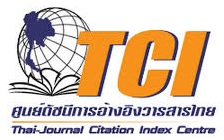A Blended Training Model Using Mobile Devices to Enhance Speaking Ability of Local Tour Guides
Keywords:
Training Model, Mobile Devices, Local English-speaking Tour Guides, Inter-rater reliabilityAbstract
The purposes of this study were to develop a training model called A Blended Training Model Using Mobile Devices to Enhance Speaking Ability of Local Tour Guides and to evaluate its effectiveness in enhancing local tour guides to be more confident and efficient in their delivery of tour guiding commentary. The training was delivered into 2 sessions: 66 hours in 22 days of in-house training and 4 weeks of self-training through iPod Touch devices. The implementation and evaluation were carried out by a 1-group pre-test and post-test design experimental study. To prove the participants’ oral English competency, the pre-test and the post-test results were compared and assessed by three raters using a 4-level scoring scale in order to see degree of change in seven spoken language components:content, organizational pattern, language functions, pronunciation, spoken grammar, spoken vocabulary, and communication strategies. A nonparametric test, Krippendorff’s Alpha, was used to assess inter-rater reliability. Moreover, to evaluate if the training model met their needs, the trainees completed five questionnaires to examine their attitudes towards the in-house training and self-training sessions through an iPod Touch. The findings revealed that, based on a 4-point scale, 13 trainees’ performances reached a higher level (Level 3), 1 reached a much higher level (Level 4), and 1 showed no change. The selfassessment scores, before and after training, were significantly different at the level .001, indicating that the trainees assessed themselves positively. In brief, the findings affirmed the effectiveness of the constructed training model for local tour guides.
References
Boonjan et al. (2005). The Development of English Learning Process by Instructional Packages of English
for Enhancing Local Tourism: Case Study Khao Kor District, Phetchabun. Rajabhat Phetchabun University.
Brown, J. D. (1995). The Elements of Language Curriculum: A Systematic Approach to Program
Development. Heinle & Heinle, USA.
Bygate, M. (2001). Speaking. R. Carter & D. Nunan (Eds.). The Cambridge Guide to Teaching English to
Speakers of Other Languages. 14-20. Cambridge: Cambridge University press.
Douglas, D. (2000). Assessing languages for Specific Purposes. Cambridge: Cambridge University Press.
Feez, S. (1998). Text-based Syllabus Design. Sydney: Macquarie University.
Hayes, A.F., & Krippendorff, K. (2007). Answering the call for a standard reliability measure for coding data.
Communication Methods and Measures, 1, 77-89.
Kunyot, T. (2005). Developing the English oral competency of tourism industry students by means of a
genre-based ESP approach. Doctoral Thesis, Edith Cowan University, Australia.
Lee, J. F., & VanPatten, B. (2003). Making Communicative Language teaching Happen. New York: Mcgraw-Hill.
Luoma, S. (2004). Assessing Speaking. Cambridge: Cambridge University Press.
McConatha, D., &Praul, M. (2006). Mobile Learning in the Classroom: An Empirical Assessment of New
Tool for Students and Teachers. [On-line] Available: www.hotlavasoftware.com/information.php?infor_id=30.
Miles, M.B., & Huberman, A. M. (1994). Qualitative data analysis (2nd ed.). Thousand Oaks, CA: Sage.
Nakjan, S. (2005). Curriculum and Instruction Development of English for Tourism in Phetchburi Phase 1
and 2. Rajabhat Phetchaburi University.
O’Malley, C. et al. (2003). Guideline for learning in mobile environment. [On-line] Available: http://www.
mobilearn.org/download/results/guides.pdf
Prachanun. et al. (2005). The Study and Development of Learning Process of Teachers of English for
Supporting Long Life Local Tourism: A Case Study of Phanom Rung Sanctuary, Buriram Province.
Rajabhat Buriram University.
Richards, J. C. (2001). Curriculum Development in Language Teaching. Cambridge: Cambridge University Press.
Richards, J.C., & Schmidt, R. (1985). Longman Dictionary of Language Teaching & Applied Linguistics.
London: Longman.
Savignon, S. J. (2001). Communicative Language Teaching for the Twenty-First Century. M. Celce-Murcia (Ed).
Teaching English as a Second or Foreign Language, Third Edition, 13-28. Boston: Heinle & Heinle.
Singh,H. (2003). Building Effective Blended Learning Program. [On-line] Available: http://bookstoread.com/
framework/blended_learning.pdf
Taba, H.(1962). Curriculum Development: Theory and practice. New York: Harcourt Brace
Thornton, P. & Houser, C. (2005). Using mobile phones in English education in Japan. Journal of Computer
Assisted Learning, 21, 217-228. Retrieved from http://www.blackwell-synergy.com/doi/pdf/
Tiptara et al. (2005). Tourism English for Beach Activities. Rajbhat Songkla University.
Tongpinit et al. (2005). Developing the Learning Process and the Associated Skills of Teachers to Promote
Tourism: A Case Study of Schools in Thali District, Loei Province. Rajabhat Loei University.
Tyler,R.W. (1949). Basic Principles of Curriculum and Instruction. Chicago and London: The University of
Chicago Press.
Weiler, B. & Ham, S. (2001). Tour guides and interpretation. D. Weaver (ed.) Encyclopedia of Ecotourism. CAB
International. Wallingford, UK, 549-564.
Yodmongkol et al. (2005). Enhancing English Teachers’ Competence for Local Tourism Promotion: A Case
Study of Phu Kradung National Park. Rajabhat Loei Unversity.





 ThaiJO
ThaiJO